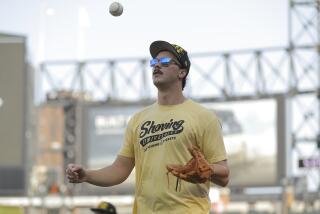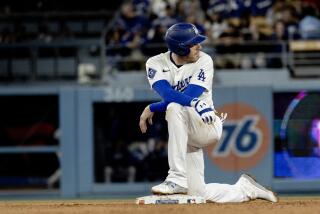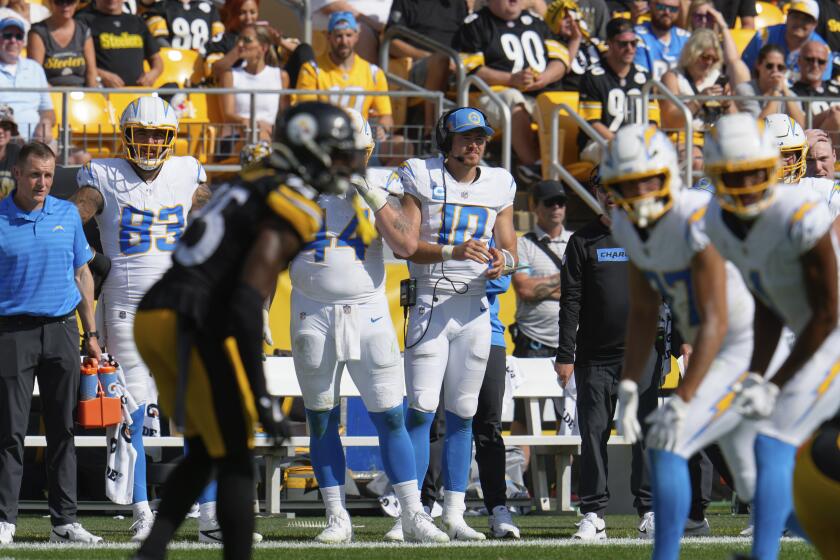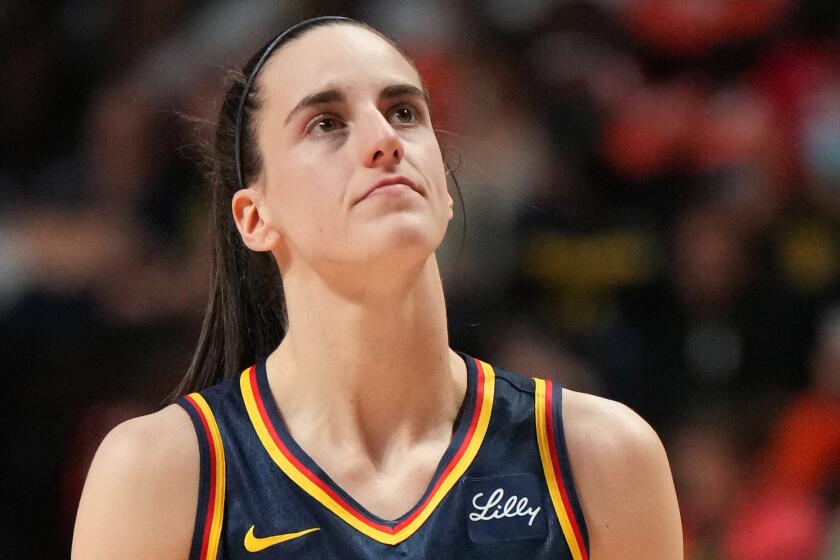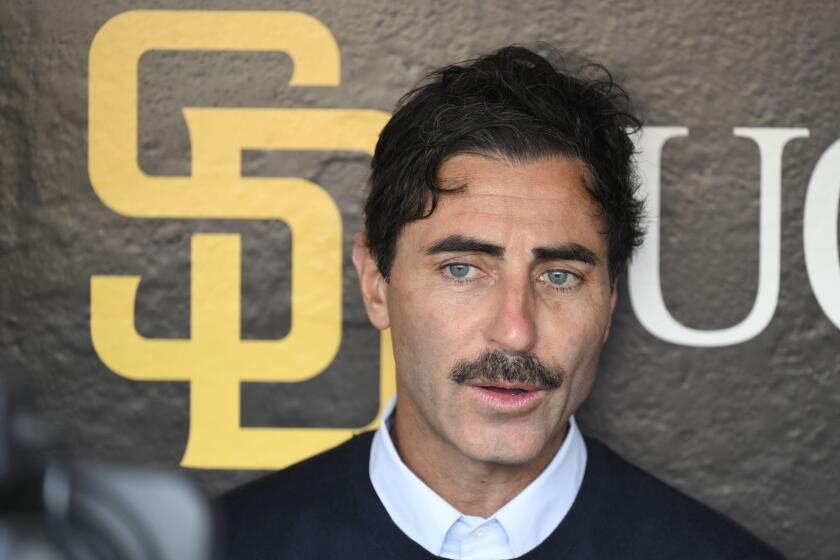For baseball’s one-hit wonders, the magic can last a lifetime

Jeff Banister has worn a baseball uniform to work for more than a quarter-century, first as a minor league player and instructor and for the last four seasons in the big leagues as a bench coach with the Pittsburgh Pirates.
But if you blinked at the wrong time, you missed his entire major league playing career: one at-bat 22 summers ago on a warm, cloudy evening in Pittsburgh’s Three Rivers Stadium.
It ended with an infield single, the baseball now sitting on a shelf in his 10-year-old son’s bedroom.
“The events in my life allowed me to just really, truly kind of hold on to that one at-bat, that one game, and just how precious they really are. And how fragile professional sports and athletes really are,” Banister says. “It can be there one day and gone the next. I didn’t dwell on it. I don’t dwell on it.”
This month, hundreds of players — many wearing numbers more commonly associated with offensive linemen than outfielders — have gathered in spring-training camps hoping to earn their chance, however brief, to play in the big leagues.
In baseball parlance, such cameos are known as a “cup of coffee” because they generally last no longer than it takes a person to down a mug of joe.
The best-known major leaguer who never got a second cup was Archibald “Moonlight” Graham, who in 1905 played two innings in the outfield in his only game for the New York Giants and didn’t get a chance to bat against major league pitching until 84 years later, when he was reborn in the film “Field of Dreams.”
The fate of the real-life Graham — as opposed to reel-life one, who delivered a sacrifice fly in his only plate appearance in the film — has befallen nearly 1,000 token major leaguers since Frank Prescott Norton struck out in his only at-bat with the Washington Olympics in May 1871.
Banister earned a place in baseball lore among 21 players who got a hit in their only plate appearance, according to baseballreference.com. Most others earned a much smaller slice in the game’s history.
Former Mets catcher Joe Hietpas made his only big league appearance as a defensive replacement, playing the final inning of the final game of the 2004 season. Astros reliever Philip Barzilla’s career was even shorter, lasting one-third of an inning two seasons later.
“But, you know, I did pitch in the big leagues,” Barzilla says proudly. “And not a lot of people got to do that.”
Even so, one out was not what Barzilla envisioned growing up outside Houston with dreams of pitching for the hometown Astros.
A left-hander who kept the ball down, he was in the middle of his best minor league season when he was promoted to the majors on June 6, 2006.
“So how do you like that?” Barzilla says. “I was called up on 6-6-6.”
That would prove to be an omen for subsequent missteps and missed opportunities, the first of which came a day later when Barzilla, told he would pitch that night against the Chicago Cubs, watched Chris Sampson take the ball instead and pitch seven scoreless innings in his first major league start.
Barzilla spent three more days stewing in the bullpen before being called on with two out and a runner on first in the eighth inning of a one-sided game against the Atlanta Braves. He missed with his first two pitches before giving up a single to Brian Jordan, then got Todd Pratt on an inning-ending fly to center.
Two batters, seven pitches, and Barzilla’s big league career — something he had worked toward from the first time he picked up a baseball — was over. Less than 48 hours later, he was sent back to triple A, and nine days after that the Astros dropped him from their 40-man roster to make room for Roger Clemens.
“Essentially . . . Roger Clemens took the job from me,” says Barzilla, who pitched three more seasons in the minor leagues for Seattle and San Diego before finishing his career by posting a 2-3 record and 6.58 ERA for Veracruz of the Mexican League in 2010.
“I’m at peace with what happened,” Barzilla adds. “But of course . . . every once in a while you have some days where, ‘Oh man, if this would have happened, if that would have happened.’ [But] for the rest of my life, I’ll be a big leaguer.”
Dustin Bergman can make the same claim after pitching two innings of relief for the Angels in his only big league appearance nine years ago. And although he says he has no regrets, when he rewinds the mental tape of that game, it’s clear he wishes he would have had a second chance.
“You always think about just having that one go,” he says. “You think if that first guy had just rolled it over and if that had been a double play, would I have gotten to get in there again?”
Bergman did retire his first hitter — on “an absolute rocket,” he says — but things went downhill from there. There was a wild pitch, a walk, then three straight hits and four runs, three of which were charged to him. His career major league earned-run average: 13.50.
Bergman spent the next five days in the Angels’ bullpen before being optioned back to triple A. He spent the next seven years pitching in the minors for the Angels, New York Yankees and San Francisco, in four independent leagues and even in Germany before retiring at age 34 after posting a 7-1 record and 3.21 ERA last summer for the Arizona Centennials of the Freedom Pro Baseball League.
“If you strike everybody out, they don’t send you back,” Bergman says. “But it is what it is and I have no regrets really. I wish I had done a little bit more. But everybody does, I’m sure.”
The majority of one-and-done big leaguers undoubtedly feel that way. For every John Paciorek, who was three for three with two walks and three RBIs and scored four times in his only game for Houston in 1963, there are more than four dozen others who, like Hall of Fame manager Walter Alston of the Dodgers, struck out in every one of their big league at-bats.
There are a dozen or so pitchers who retired every batter they faced, and 23 who never got an out.
Then there’s Larry Yount, brother of Hall of Fame member Robin Yount. Larry is the only pitcher in MLB history credited with an appearance even though he never faced a hitter. Warming up after being called in from the bullpen for the Astros in September 1971, he injured his arm. That’s still better than what happened to outfielder Wayne Lydon, who was called up from double A by the New York Mets, took batting practice, but then was sent back to the team’s hotel — and eventually to the minors — without ever being activated.
That same year, in September, Hietpas was promoted from double A to give the Mets some catching depth. He spent nearly three weeks in the big leagues before making his only appearance in the final half-inning of the final game of the season — which also happened to be the final half-inning ever played by the Montreal Expos and the final half-inning ever managed by Art Howe.
“It’s a pretty obscure part of history,” Hietpas concedes. “I’m probably the only person in the world that knows that.”
Not many people know Banister’s back story, either.
When he was a junior in high school, during an examination of an ankle injury, doctors discovered cancerous cysts that required extensive skin grafts. Later, the condition developed into a bone-eating bacterial disease so advanced that doctors wanted to amputate.
Banister refused, and seven operations later the leg was saved. But three years after that, Banister was back in the hospital after his back was broken in a home-plate collision during a junior college game in Texas.
The injury left him paralyzed, and it took three operations and a painful year of rehabilitation before he could walk again.
“I spent a lot of time in a hospital room dreaming,” Banister says by phone from the Pirates’ spring-training camp in Florida. “Baseball brought me back to life a couple of different times. And gave me hope and something to fight for on a daily basis. So there’s much more to it than just one at-bat.”
After his call-up, he recalls rushing to the ballpark to find a Pirates jersey hanging in his locker. “I just sat there and admired [it],” Banister says. “It was the ultimate moment of a baseball career, to walk into a clubhouse and see your name on the back of a major league uniform.”
His at-bat came that same night, as a pinch-hitter in the seventh inning of a blowout win over the Braves. The first pitch from Dan Petry was high and tight, Banister remembers, and the second was a slider he swung at and missed.
Banister grounded the next pitch deep in the hole at short, where the Braves’ Jeff Blauser made a backhand stop but was late with his throw to first. The man who nearly had a leg amputated, then was told he might never walk again, had just beaten out an infield hit in the major leagues.
“Everyone calls it a dream to play in the big leagues. Well, it truly is,” Banister says. “But for some it’s even greater than others.”
A few days later, Banister was sent back to Buffalo. That winter, playing in the Dominican Republic, he blew out his elbow trying to throw out a baserunner. After another year of rehab, he returned to the minors and got only five more hits.
But that one shining moment at Three Rivers Stadium will stay with him forever.
Earlier this month, Banister spoke to a class of fifth-graders, bringing along a copy of the coffee table-sized Baseball Encyclopedia and telling the children to look up the statistics for any player they wanted.
“My son happens to be in the classroom and he looked up my name,” Banister says. “He had never done it before. And there, between Ernie Banks and Sal Bando, was one line. And at the very tip end it says [batting average] 1.000.
“So yeah, it is pretty cool.”
twitter.com/ @kbaxter11
More to Read
Go beyond the scoreboard
Get the latest on L.A.'s teams in the daily Sports Report newsletter.
You may occasionally receive promotional content from the Los Angeles Times.
